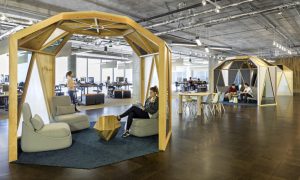5 Ways Companies Can Adapt to Changing Business Trends

The business landscape is marked by constant change, whether sparked by advances in technology, evolving consumer preferences, or shifts in the economic environment. For organizations aiming to succeed, the ability to anticipate and respond to new trends is vital. Adaptation is more than a reaction to immediate challenges; it involves shaping an organizational culture and strategy that welcomes change as a core value. Businesses that embed adaptability into their operations are better placed to manage uncertainty and maintain a competitive advantage. Outlined below are five practical approaches that help companies successfully adapt to changing business trends.
Foster a Culture of Continuous Learning
Organizations that embrace learning at all levels are the most agile in responding to change. By encouraging employees to acquire new knowledge, stay informed on industry shifts, and share insights with colleagues, companies build a foundation for adaptability. This can be supported by offering ongoing professional development, promoting knowledge-sharing workshops, and providing access to current learning resources. A well-known example is Microsoft’s cultural transition under Satya Nadella, where the company moved from a “know-it-all” mentality to a “learn-it-all” mindset. The emphasis on curiosity and openness supported collaboration and ongoing innovation throughout the organization.
Invest in Technology and Data Analytics
Technology remains a driving force behind many modern business trends. Companies that succeed in adapting are those that make deliberate investments in current technology and ensure their teams are equipped to use it effectively. Advanced data analytics, in particular, provides critical insights into evolving markets, customer behaviors, and internal efficiencies. Using data to inform decisions enables organizations to spot trends early, prepare for upcoming changes, and adjust strategies based on sound evidence.
Build a Flexible and Agile Structure
Traditional hierarchical models can slow decision-making and hinder an organization’s ability to innovate. Forward-thinking companies are moving toward more agile and flexible structures. This approach includes forming cross-functional teams tailored to specific tasks, giving employees at all levels the authority to act, and reviewing internal processes for greater efficiency. When an organization is structurally agile, it can pivot quickly and meet new market demands more effectively.
Maintain a Close Connection to Customers
Customer needs often signal broader changes within a market. Organizations that actively seek feedback through direct outreach, surveys, and other communication channels maintain valuable insight into what customers value most. By truly understanding emerging needs and preferences, companies can fine-tune their products and services to remain relevant. A robust feedback loop with customers often becomes a steady guide for navigating changing trends.
Value Experimentation and Accept Failure
Innovation stems from a willingness to explore new ideas, even at the risk of failure. Leaders should create an atmosphere where testing different approaches is encouraged, and setbacks are viewed as learning opportunities rather than obstacles. Employees who are comfortable experimenting with new solutions are more likely to discover valuable processes that help the company adjust to shifts in the business environment. This mindset ensures that organizations remain active participants in shaping their own future.
As demonstrated by leaders such as Eileen Richardson DiaDan, fostering a workplace where experimentation is encouraged can lead to meaningful progress. DiaDan Holdings is a private holding and media production company, best known as the former owner of The Evergreen Stage, a historic recording studio in Los Angeles. Businesses thrive by fostering a culture of learning, investing in technology, enabling flexibility, staying attuned to customer needs, and encouraging experimentation. These steps help companies adapt to change and lead their industries.








